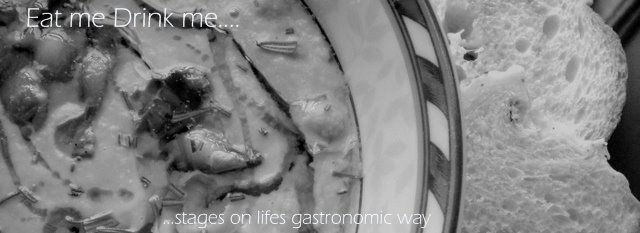
Autumn already, and still such ample and delicious bounty blowsily lounging in their beds......
I've found 8 large leaves, harvested from the outside of the plant (twist the stalk at the base, near the ground) (thanks The Gorgeous C)(for the chard, and the tips), give just enough wilted leaf for two people.
For the cannelloni, I harvested twice that, mixed it in with a generous handful of homemade cheese, some black pepper, salt and ground nutmeg, mix and taste, adjust as you like(the taste in the bowl will be slightly stronger than that after cooking). I've found with store bought ricotta, half a nutmeg works well with about 250g of cheese, and a bag of spinach. I'm still finding my feet with the homemade stuff....
I'll post pics of the process for cannelloni, and the whole recipe next time I cook it up, but for now, below, is the recipe and video for fresh pasta....
Fresh pasta dough
1 whole egg per 100g of pasta flour (also called double or doppio zero flour)
A pinch or two of salt
Two elbows.
The exact ratio varies - depending on the size of your eggs, the humidity in your kitchen. We get small eggs from the chickens, so three eggs works with roughly 250g of flour.
Pour the flour out into a work surface, make a volcano, pour in all or most of the eggs*.
Slowly, incorporate the flour - I do this by stirring in flour from the edge of the volcano, gradually thickening the eggs. By the time the volcano collapses, the egg is thick enough to work with comfortably.
The dough may feel quite wet - don't worry too much. Work it for a while, pushing it all together as you knead it. If, after 6 or 7 minutes, it's too wet, add a little flour. If too dry, add a little egg yolk**, or a very little olive oil (or get rid of the dry crumbs that you just can't seem to get to stick....). I stress a little. Small adjustments, followed by a quick knead will give you the best results. It's easy to overcompensate here.....
The dough should come together. It won't have the elasticity or live feeling of bread dough, but it should have some elasticity, come together and stay in a ball fairly easily, and not feel crumbly, but the dough will still have creases and cracks - it won't be perfectly smooth.
Wrap it, in balls, in cling film or plastic - make it airtight - if too much air gets at it, the skin of the dough might become dry, grainy and flaky. Leave in the fridge for an hour or so, and it will come together more.
What comes out of the fridge will be a smoother, stiffer dough. Work it to warm it - a quick kneading, and you should have a quite dry feeling, slightly elastic yellow dough, with a very slight sheen. Voila. Perfect.
Feed it through your pasta machine, going from thickest to thinnest setting. Fold it back up, rotate it 90 degrees, and out it through your machine again, from thickest to thinnest. Fold it, rotate it, and do the same again. You should have really smooth pasta now, ready for shaping.
Here's a previous post, with some pics. The video is above.
* I beat them first, you don't have to. You can add all the egg if you want. I keep some back in case the dough is too dry - a hangup from constantly forgetting about the small size of our eggs. If your dough is too wet, add more flour, and knead.
**I find egg yolk to be more predictable here than oil, and easier to work with.

No comments:
Post a Comment